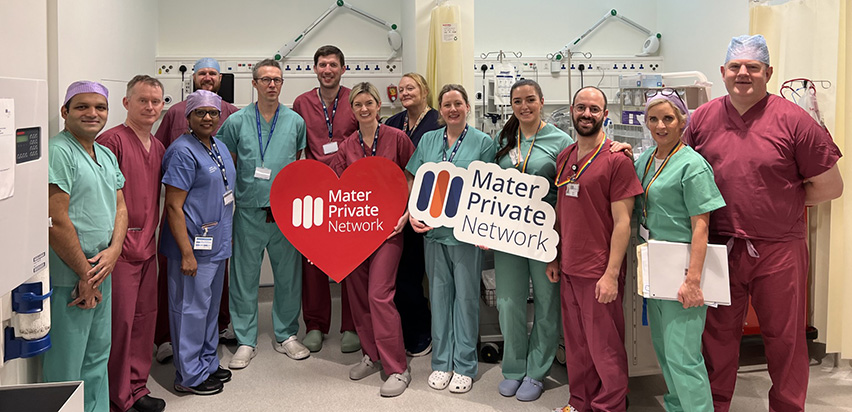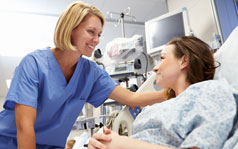Aortic Aneurysm
What is an aortic aneurysm?
The aorta is the largest artery in your body, and it carries oxygen-rich blood pumped out of your heart. Your aorta runs through your chest and down to your abdomen. The abdominal aorta supplies blood to the lower part of the body. In the abdomen, just below the navel, the aorta splits into two branches, called the iliac arteries, which carry blood into each leg.
When a weak area of the abdominal aorta expands or bulges, it is called an abdominal aortic aneurysm (AAA). The pressure from blood flowing through your abdominal aorta can cause a weakened part of the aorta to bulge, much like a balloon. Aneurysms are a health risk because they can burst or rupture. A ruptured aneurysm can cause severe internal bleeding, which usually leads to shock or even death.
Aside from internal bleeding, the condition can cause another serious health problem called embolisation. Clots or debris can form inside the aneurysm and travel to blood vessels leading to other organs in your body. If one of these blood vessels becomes blocked, it can cause severe pain or even more serious problems, such as limb loss.
What causes aortic aneurysms?
Abdominal aortic aneurysms (AAA) are caused by progressive weakening of the aortic wall creating a “ballooning” of the vessel. If left undiagnosed and untreated the AAA can continue to grow larger and may eventually rupture.
Aneurysms occur most often in the aorta, the main artery in the chest and abdomen. The aorta carries blood from the heart to all parts of the body including the vital organs, the legs and feet.
What are the risk factors?
Your risk of developing an abdominal aortic aneurysm (AAA) increases as you get older. However, it is more common in men.
It is unclear what actually causes this condition to develop. It may be caused by inflammation in the aorta, which may cause its wall to weaken or break down. This inflammation can be associated with atherosclerosis, where fatty deposits build up in an artery.
Other factors that can increase your risk of developing this condition include:
- Being male and over 60 years of age
- Having an immediate relative, such as a father or brother, who has had the condition
- Having high blood pressure (hypertension)
- Smoking
- Having a history of heart disease or peripheral artery disease
What symptoms should I watch out for?
Although you may initially not feel any symptoms, if they do develop, you may experience one or more of the following:
- A pulsing feeling in your abdomen, similar to a heartbeat.
- Severe, sudden pain in your abdomen or lower back.
- Your feet may develop pain, discolouration, or sores on the toes or feet.
If your aneurysm bursts, you may suddenly feel intense weakness, dizziness, or pain, and you may eventually lose consciousness. This is extremely serious and you should seek urgent medical attention
Although AAA can be detected by physical examination in a thin patient, most are diagnosed today using a simple non-invasive ultrasound scan that can be performed in less than 15 minutes.
This scan can determine the size of the AAA which is a key element in determining the best treatment.
The combination of early diagnosis with safer, simpler, and ever more successful treatments can prevent deaths due to ruptured abdominal aortic aneurysms.
When aortic aneurysms are diagnosed early, treatment is safe and effective. Aneurysms are often detected while performing tests for entirely different reasons. Most patients have no symptoms, so if you are at risk, it is important to discuss AAA with your doctor.
How are aortic aneurysms treated?
Watchful waiting
If an aneurysm measures less than 5.5cm regular surveillance scans to monitor its size and growth rate are the usually the most appropriate management which means that you will be monitored every 3-12 months for signs of changes in the aneurysm size. Your doctor may prescribe medication to lower the pressure on the weakened area of the aneurysm. If you smoke, you should obtain help to stop smoking, as it is more likely to increase in size quickly if you continue to smoke.
An aneurysm will not "go away" by itself. It is extremely important to continue to follow up with your doctor as directed because the aneurysm may enlarge to a dangerous size over time. It could eventually burst if this is not detected and treated. If the AAA is larger than 5.5cm in diameter it usually requires treatment.
An aneurysm can be treated in one of two ways:
1. Open surgical aneurysm repair
Open surgical repair of AAA is a very successful and durable procedure. During the surgery, the surgeon makes a long abdominal incision, then replaces the diseased part of the aorta with an artificial graft usually made out of a synthetic material called Dacron that is carefully matched to the size of the normal aorta. This graft is then sewn into place. Most patients stay in the hospital for five to ten days after the procedure if no complications occur. However not all patients are suitable for this procedure.
2. Endovascular stent graft
Instead of open aneurysm repair, you may be offered a newer procedure called an endovascular stent graft. This is a minimally invasive catheter-based procedure, which allows repair of the AAA by inserting the graft through a small incision in both groins. The graft is then delivered through a catheter into the AAA. The graft is then expanded inside the AAA and held in place with metallic hooks rather than sutures. The hospital stay is usually less than a week. Patients with other medical problems or those that could not withstand major surgery can be considered for repair by an endovascular graft.
However, it does require more maintenance than an open procedure. It is not suitable for all patients as it depends on the shape of the aneurysm in an individual patient and its proximity to the arteries in the kidneys.









